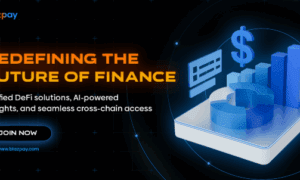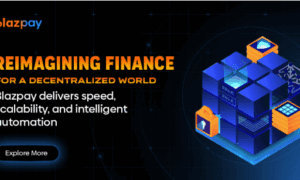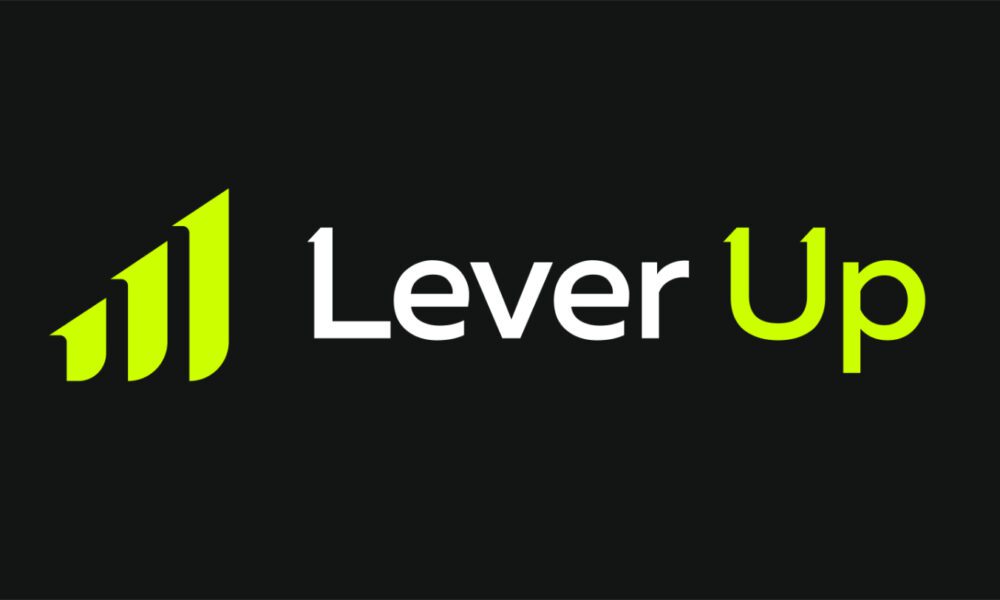Introduction
In today’s digital economy, cryptocurrency has become one of the most discussed topics in Turkey and around the world. Many people ask, “cryptocurrency nedir?” — what exactly is this new form of money, and how does it work? At its core, cryptocurrency is a digital asset that uses blockchain technology to record transactions safely and transparently.
Understanding how cryptocurrency platforms operate is essential for anyone who wants to trade, invest, or build in this ecosystem. One of the best ways to explore this world is through smart trading technologies like Trade Vector AI, which helps investors analyze and manage digital assets more effectively.
In this guide, we’ll focus on how cryptocurrency exchanges are built and how they really work behind the scenes. Knowing the cryptocurrency advantages and disadvantages will help you make better financial decisions and protect your assets in an unpredictable market.
Unlike traditional banks, crypto platforms don’t rely on a central authority. Instead, they operate through a network of users, miners, and developers. Still, most exchanges must interact with the traditional financial system, also known as fiat cryptocurrency gateways. These bridges allow you to convert your Turkish lira (TRY) or US dollars into crypto and back again.
However, as the market grows, so do the legal challenges. Many traders now turn to experts such as a cryptocurrency attorney for advice on regulations, taxation, and digital asset protection. This shows that understanding the architecture of crypto exchanges is not only about technology — it’s also about compliance and financial safety.
In the next sections, we will explore what makes up a cryptocurrency exchange, how it processes orders, stores digital assets securely, connects with fiat systems, and what trends are shaping its future. Let’s start with the core structure of every crypto trading platform.
Main Components of a Cryptocurrency Exchange
To understand how crypto platforms function, it’s important to look at their internal structure. Every cryptocurrency exchange is built from several essential components that work together like a digital ecosystem. Each part plays a key role in ensuring the platform is fast, secure, and user-friendly.
1. Frontend – The User Interface
The frontend is what traders see and use every day. It includes dashboards, price charts, order books, and trading buttons. A well-designed interface helps users make quick decisions and view their balance in real time. In Turkey, where mobile trading is common, clear and responsive design is especially important.
2. Backend – The System’s Brain
Behind the screen, there’s a powerful backend system that handles every transaction. It records trades, connects buyers and sellers, and updates account balances. The backend also communicates with databases, servers, and external payment systems. This invisible layer ensures that even thousands of transactions per second are processed without delays.
3. Wallet Management System
Every exchange has a wallet infrastructure that stores digital assets safely. There are two main types:
- Hot wallets – connected to the internet for quick transactions.
- Cold wallets – kept offline for maximum security.
Most platforms use both. Cold wallets protect large reserves, while hot wallets make daily trading smooth. This hybrid system minimizes risk and increases trust among users.
4. Security Layer
Security is the foundation of any crypto platform. Advanced systems use two-factor authentication (2FA), encryption, and regular audits to protect users. Legal compliance also plays a role here — Turkish and international laws require exchanges to follow AML (Anti-Money Laundering) and KYC (Know Your Customer) procedures. That’s where the advice of a cryptocurrency attorney becomes crucial.
5. System Interaction Table
| Component | Main Function | Security Focus |
| Frontend | User interface for trading and data visualization | SSL encryption, user authentication |
| Backend | Processes trades and stores transaction data | Database protection, API firewalls |
| Wallet System | Holds and transfers crypto assets | Cold storage, multi-signature access |
| Security Layer | Protects all parts of the exchange | 2FA, anti-phishing, KYC/AML checks |
Together, these elements form the core of a cryptocurrency exchange. Each layer supports the others, ensuring smooth performance and user safety. Understanding these systems helps traders better evaluate the cryptocurrency advantages and disadvantages of each platform they use.
Matching Engine and Order Processing
At the center of every cryptocurrency exchange lies its most critical part — the matching engine. This system connects buyers and sellers by pairing their orders in real time. When someone places a buy order, the engine looks for a sell order with the same or better price and executes the trade instantly. The faster and more reliable this system is, the better the user experience.
How It Works
When a trader enters an order, the request travels from the frontend to the backend. The matching engine then checks the order book — a live list of all buy and sell offers. If there’s a match, the trade happens automatically. If not, the order waits until a suitable counteroffer appears.
Exchanges use different types of orders to meet traders’ needs:
- Market order – executes instantly at the current price.
- Limit order – executes only when the market reaches a chosen price.
- Stop order – protects from losses by triggering when prices move sharply.
By processing these transactions quickly and accurately, the matching engine ensures liquidity and stability in the market. Even small delays can cause slippage — when a trade executes at a worse price than expected. That’s why modern exchanges in Turkey and globally invest heavily in fast, low-latency systems.
Technical Approach
Some platforms use off-chain matching to improve speed, where orders are matched outside the blockchain and only final results are recorded. Others prefer on-chain settlement for transparency and decentralization. Both models have their own cryptocurrency advantages and disadvantages — off-chain systems are faster, but on-chain ones are more transparent and secure.
Why It Matters
A strong matching engine not only improves performance but also builds trust. When users see that their orders execute smoothly and accurately, they’re more likely to continue trading. This reliability becomes a competitive advantage for any crypto platform, including those that integrate AI-based analysis tools like Trade Vector AI.
At the same time, matching engines must follow compliance standards. Poorly configured systems can cause manipulation or insider trading. For this reason, many exchanges cooperate with a cryptocurrency attorney to review their processes and ensure legal transparency.
Ultimately, the efficiency of the matching engine defines how well an exchange serves its community. It connects technology, law, and finance into one dynamic system — the true engine of today’s digital economy.
Wallets and Asset Storage
A cryptocurrency exchange is not just a place for trading — it’s also a secure vault for storing digital assets. The way a platform manages wallets and custody systems is one of the most important indicators of its safety and reliability. Understanding how these wallets work helps investors protect their funds and assess the true cryptocurrency advantages and disadvantages.
Types of Wallets
Every exchange operates two main kinds of wallets:
- Hot Wallets: These are connected to the internet. They make it easy to send and receive funds instantly. However, because they’re online, they carry higher security risks.
- Cold Wallets: These wallets stay offline, disconnected from any network. They are ideal for long-term storage since they are far less vulnerable to hacking or malware attacks.
Most professional platforms use both types to balance accessibility and safety. They keep only a small percentage of user funds in hot wallets for active trading and store the rest in secure cold storage facilities.
How Exchanges Keep Assets Safe
To reduce risks, modern platforms use multi-signature systems, meaning multiple approvals are needed to move funds. They also implement hardware security modules (HSMs), encrypted backups, and real-time monitoring tools. These features make it nearly impossible for unauthorized parties to access stored cryptocurrencies.
In Turkey and other regions with growing crypto adoption, exchanges are also required to comply with government regulations. This includes strict KYC and AML policies to track suspicious transactions. Many businesses consult a cryptocurrency attorney to make sure their storage systems meet local and international legal standards.
Example of Wallet Distribution
| Wallet Type | Usage Purpose | Security Level |
| Hot Wallet | Daily trading and instant withdrawals | Medium (requires strong protection) |
| Cold Wallet | Long-term storage and asset reserves | Very High (offline and encrypted) |
Legal and Practical Perspective
The importance of regulated storage has grown alongside the market. Some Turkish exchanges now use third-party custody services that specialize in secure crypto management. These services provide insurance and detailed audit trails — giving traders peace of mind when holding large amounts of crypto.
As fiat cryptocurrency gateways become more common, wallet systems are also expanding to support both traditional and digital assets in one interface. This hybrid model simplifies the user experience and encourages more people to explore crypto safely.
In summary, secure wallet architecture is the backbone of every exchange. Without strong storage protection, even the fastest trading engine would fail to earn user trust. That’s why wallet management remains the most critical factor in building a reliable crypto ecosystem.
Connection with Traditional Finance and Fiat Gateways
One of the most important aspects of any crypto exchange is how it connects to the traditional financial system. This bridge between digital and real-world money is known as a fiat gateway. It allows users to deposit Turkish lira (TRY), US dollars (USD), or euros (EUR) and convert them into cryptocurrencies — and back again. This process is where fiat cryptocurrency integration becomes essential for mass adoption in Turkey and worldwide.
How Fiat Gateways Work
A fiat gateway functions as a link between your bank account and the crypto platform. When you buy crypto, your fiat money goes through licensed payment processors and banking partners. These intermediaries follow strict AML (Anti-Money Laundering) and KYC (Know Your Customer) rules to verify the source of funds and prevent illegal activity.
The process typically looks like this:
- You connect your verified bank account or card to the exchange.
- You transfer fiat currency (like TRY or USD) to the platform.
- The system converts your fiat into crypto, which appears in your account wallet.
- You can later sell crypto and withdraw the proceeds back to your bank.
This interaction seems simple, but behind it is a complex architecture of banking APIs, security protocols, and identity verification systems. It’s also where the support of a cryptocurrency attorney is crucial — to ensure the exchange meets all local financial regulations and consumer protection standards.
Challenges and Solutions
One of the main challenges for Turkish investors is transaction delay. Banks and crypto platforms often have different operating hours or additional approval steps, which can slow down the process. To fix this, many exchanges now use instant payment gateways and automated compliance checks to speed up deposits and withdrawals.
There are also currency conversion costs. Each transfer between fiat and crypto may involve exchange rates or small transaction fees. These are normal in hybrid systems but can influence your trading strategy. That’s why understanding these processes helps users evaluate the cryptocurrency advantages and disadvantages more clearly.
Fiat–Crypto Interaction Table
| Process Step | System Component | Compliance Requirement |
| Deposit Fiat Currency | Payment processor + banking API | KYC verification |
| Conversion to Crypto | Exchange trading engine | Transaction monitoring |
| Withdraw to Bank | Fiat gateway integration | AML and local tax compliance |
Impact on the Market
In Turkey, where cryptocurrency adoption is growing rapidly, reliable fiat gateways are driving mainstream acceptance. People trust exchanges that work with local banks, offer fast Turkish lira transactions, and comply with Central Bank rules. Platforms like Trade Vector AI also make this process easier by helping traders analyze exchange performance and optimize conversion timing.
Connecting the crypto and traditional finance worlds is not only about technology — it’s also about legal responsibility and user protection. When these systems operate smoothly, they strengthen confidence in the crypto ecosystem and encourage sustainable growth.
Security, Compliance, and Legal Aspects
Security and compliance are the foundation of every trustworthy cryptocurrency exchange. In Turkey and around the world, digital platforms must not only protect users’ funds but also comply with laws designed to prevent fraud, terrorism financing, and tax evasion. The balance between innovation and regulation defines much of the debate about cryptocurrency advantages and disadvantages.
Building a Secure Architecture
Every serious crypto platform uses a multi-layered security system. It starts with two-factor authentication (2FA), data encryption, and cold wallet storage. These measures help prevent unauthorized access to user accounts and safeguard large reserves of digital assets. Exchanges also monitor all transactions in real time to identify suspicious activity before it becomes a problem.
Some of the best practices include:
- Regular security audits — third-party experts test the platform for vulnerabilities.
- Penetration testing — simulated cyberattacks help find weak points before hackers do.
- Bug bounty programs — independent developers get rewarded for reporting security issues.
In Turkey’s fast-developing crypto market, many exchanges now partner with cybersecurity firms and AI-driven monitoring systems like Trade Vector AI to detect anomalies and automate responses.
Compliance and Legal Framework
Security alone isn’t enough — crypto exchanges must also follow local and international laws. Turkish authorities have strengthened regulations to ensure user protection, especially around identity verification and taxation. That’s why most exchanges require KYC (Know Your Customer) and AML (Anti-Money Laundering) verification before you can start trading.
Each country has its own compliance structure, and global platforms must adapt to multiple jurisdictions. This is where consulting a cryptocurrency attorney becomes essential. These professionals help exchanges:
- Obtain proper licenses to operate legally in Turkey and abroad.
- Draft transparent user agreements and privacy policies.
- Advise on tax reporting for both companies and individual traders.
Legal clarity is not only about avoiding penalties — it also builds user trust. When a platform is open about how it operates, users feel safer depositing their money. This transparency also helps attract institutional investors who require compliance documentation before working with any exchange.
Regulatory Trends
As crypto adoption grows, regulators continue to adapt. Turkish authorities are preparing new frameworks for fiat cryptocurrency exchanges to operate under the supervision of financial watchdogs. The goal is to make the market safer without limiting innovation.
Globally, the Financial Action Task Force (FATF) has introduced standards for crypto transactions, requiring exchanges to share verified user data between platforms. While some critics see this as a privacy risk, others view it as a necessary step to legitimize the industry.
Ultimately, a secure and compliant exchange combines strong technology with transparent governance. It’s where finance, law, and innovation meet — supported by experts such as a cryptocurrency attorney who ensure everything runs within legal boundaries. Understanding this structure allows traders to make smarter decisions and see both the benefits and limits — the true cryptocurrency advantages and disadvantages — of today’s digital economy.
Technical Scalability and Performance
Behind every fast and reliable cryptocurrency exchange is a solid technical backbone. The ability to handle thousands of orders per second without delay is what separates professional trading platforms from amateur ones. For traders in Turkey and beyond, performance is not just a convenience — it’s a key factor that defines profit and trust.
What Scalability Means
In simple terms, scalability means how well an exchange can grow and handle more users, transactions, and data as demand increases. When markets are volatile, thousands of people might buy or sell crypto at the same moment. If the system is not ready for that load, it can crash, freeze, or delay transactions — leading to losses and frustration.
Technologies That Make It Possible
Modern exchanges use several technologies to keep everything running smoothly:
- Microservices architecture – separates functions (like trading, wallets, and analytics) into independent modules. If one part fails, the rest continue working.
- Cloud infrastructure – allows platforms to scale up instantly when user traffic increases, especially during major crypto price movements.
- Load balancing – distributes user requests evenly across multiple servers to prevent overload.
- Caching systems – store frequent data like prices and order books for faster access.
Together, these systems ensure that traders can place and complete orders with minimum latency — even in busy market conditions. Some exchanges also integrate AI-based optimization tools such as Trade Vector AI to monitor performance metrics and automatically allocate resources where they’re needed most.
Why Performance Matters for Users
Fast execution means fair pricing. If your order is delayed, the market might move before it completes, creating what’s known as slippage. Reliable systems help avoid this, giving users the exact rates they expect. Strong performance also keeps exchanges competitive, as traders often move to platforms with the best uptime and transaction speed.
Relation to Security and Trust
Performance doesn’t stand alone. It must work hand-in-hand with security and regulation. For instance, while improving scalability, exchanges must still comply with AML and KYC rules. That’s why collaboration with a cryptocurrency attorney remains essential even at the system design stage — ensuring all upgrades respect data protection laws.
Technically scalable platforms reduce many of the cryptocurrency disadvantages often mentioned by critics, such as system instability or market manipulation. They make the trading experience smoother, safer, and more transparent for everyone.
Trends and the Future of Exchange Architecture
The world of cryptocurrency exchanges is changing rapidly. New technologies, global regulations, and user expectations are transforming how platforms are built and how they operate. For Turkey — a country with one of the fastest-growing crypto user bases — understanding these trends helps investors and developers prepare for the next phase of digital finance.
Rise of Decentralized and Hybrid Exchanges
The biggest trend is the move from centralized to decentralized exchanges (DEX). These platforms allow users to trade directly from their wallets without trusting a central authority to hold their funds. While DEXs offer more privacy and control, they can also be slower and harder to regulate. That’s why many new systems are adopting a hybrid architecture — combining the speed and liquidity of centralized exchanges with the transparency of decentralized ones.
Hybrid exchanges often use off-chain matching (fast) and on-chain settlement (secure). This design helps them deliver the best of both worlds, reducing the cryptocurrency disadvantages associated with slow or unsafe trading systems.
Integration of Artificial Intelligence
Artificial intelligence (AI) is also shaping the future of crypto platforms. Tools like Trade Vector AI are being integrated into exchange systems to predict market trends, detect suspicious activity, and optimize system performance in real time. AI-driven architecture helps exchanges become smarter, more adaptive, and better at risk management.
Regulation and Legal Evolution
As the market matures, so does regulation. Turkish and international authorities are working toward frameworks that recognize fiat cryptocurrency operations under licensed supervision. This will make it easier for exchanges to cooperate with banks and payment systems. Legal professionals such as a cryptocurrency attorney are expected to play an even larger role in shaping how future exchanges are structured, ensuring full compliance with privacy, taxation, and consumer laws.
More Secure Custody Solutions
Security remains a top priority. The future will see wider use of multi-party computation (MPC), custody-as-a-service models, and smart contract-based asset protection. These tools will make storing and transferring crypto even safer while maintaining user control.
The Big Picture
In the coming years, exchanges will become more user-centric, automated, and globally connected. Understanding these transformations helps investors and regulators appreciate both cryptocurrency advantages and disadvantages — from faster trading to new cybersecurity risks. In Turkey, this evolution may accelerate financial inclusion by giving more people access to digital assets, powered by smart and transparent exchange systems.
Conclusion
Cryptocurrency exchanges are the backbone of the digital economy. They connect people, technology, and finance in ways that were impossible just a decade ago. For Turkish investors and developers, understanding how these systems work is not only useful — it’s essential for building a safer and more efficient financial future.
Throughout this guide, we explored how exchanges function — from their frontend interfaces and matching engines to wallet security and fiat gateways. Each part plays a vital role in creating trust and ensuring that users can trade without fear. The success of a platform depends on how well these components work together and how transparently it follows regulations.
As the market grows, Turkey continues to stand out as a country embracing blockchain innovation. With the help of AI-driven platforms such as Trade Vector AI, both new and experienced traders can better understand cryptocurrency advantages and disadvantages and make informed investment choices.
We also saw that legal and security aspects are inseparable from technology. Having guidance from a cryptocurrency attorney ensures compliance with evolving laws while protecting users’ rights and data. Similarly, integrating fiat cryptocurrency systems strengthens the bridge between digital and traditional finance, opening the door for more inclusive participation.
In short, cryptocurrency nedir — it’s not just digital money; it’s a complex ecosystem built on architecture, trust, and innovation. By learning how exchanges truly work, Turkish investors can move beyond speculation and embrace crypto as a sustainable part of their financial strategy. The more we understand its structure, the more we can benefit from its future.



































